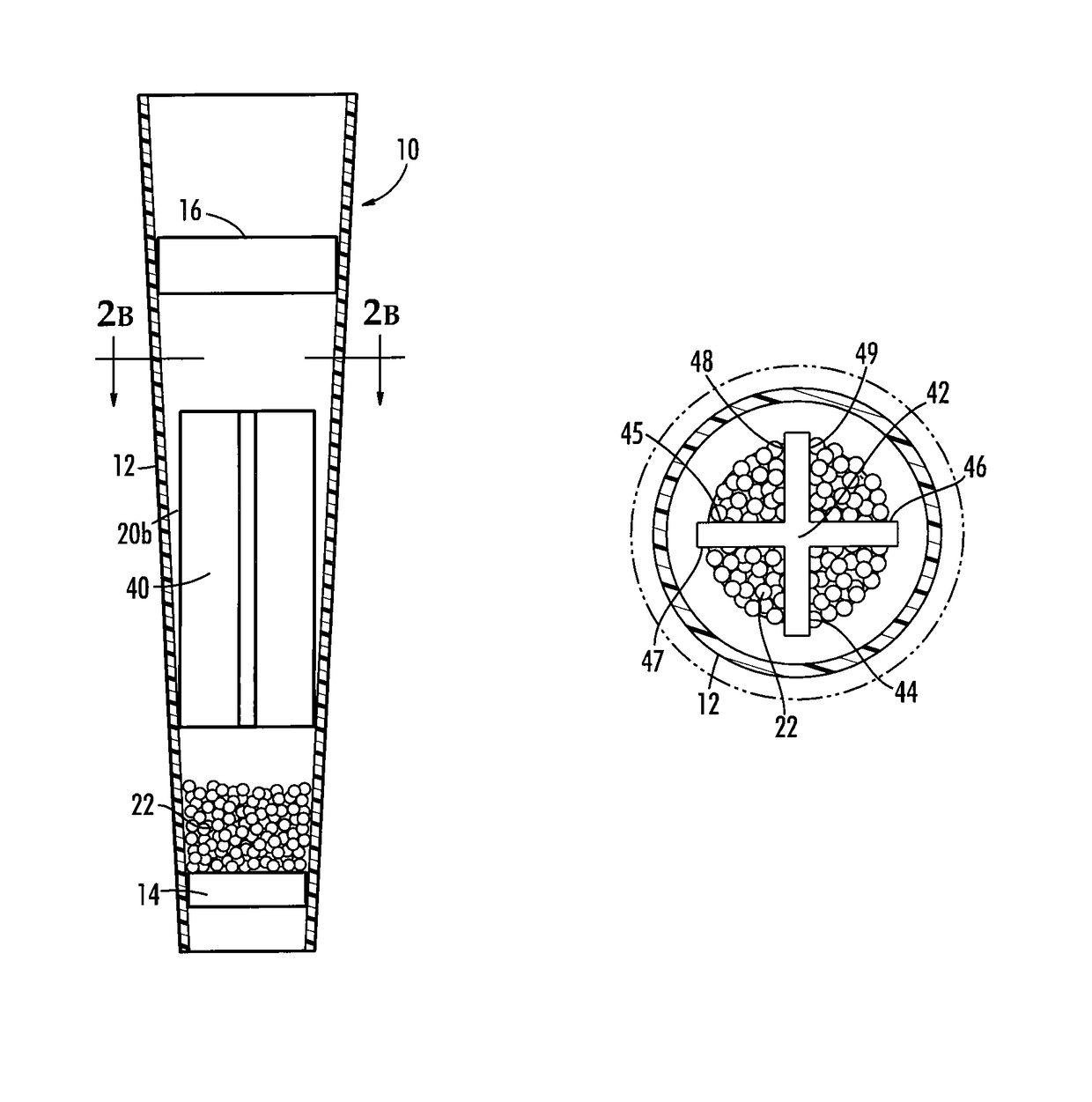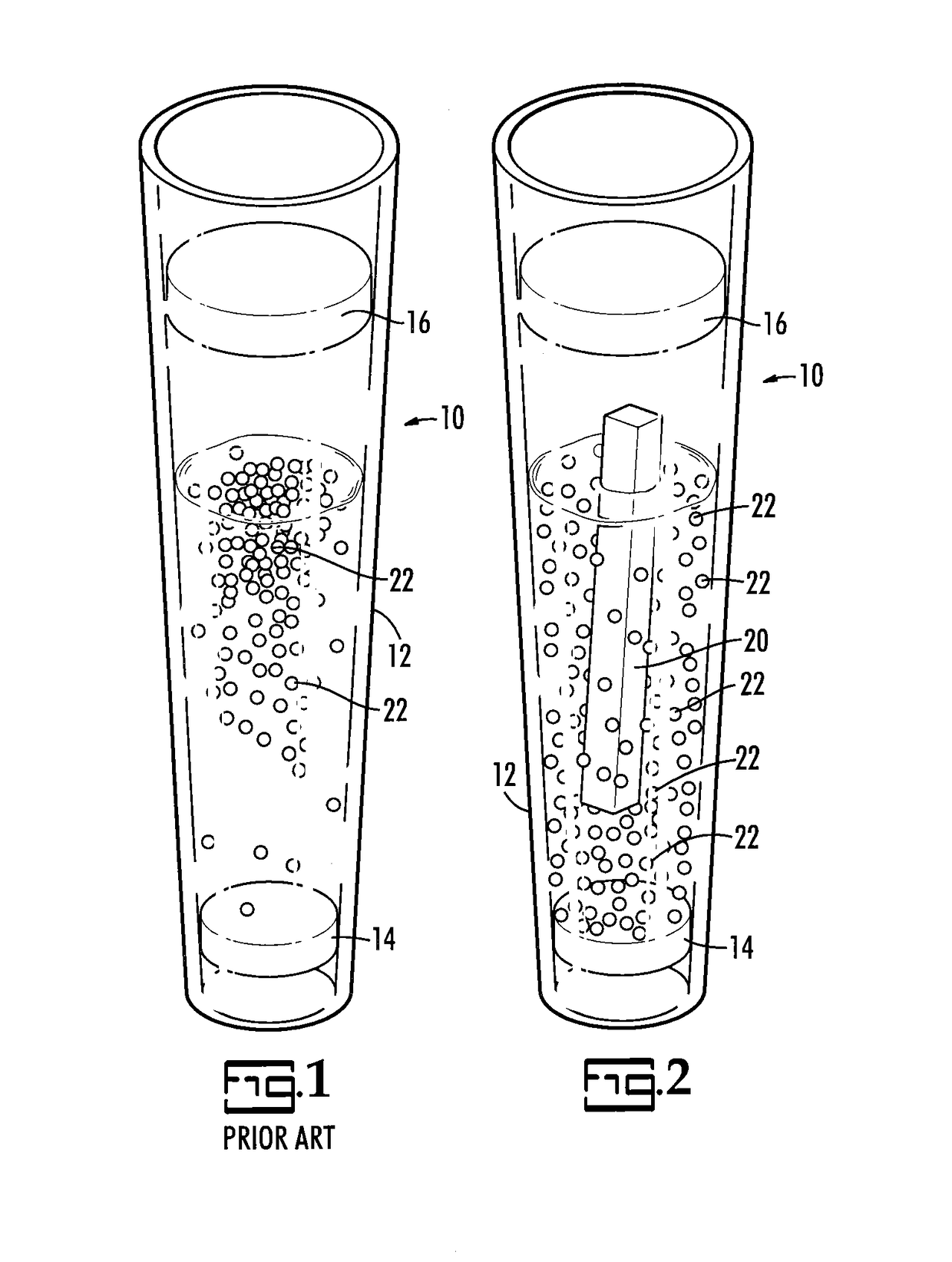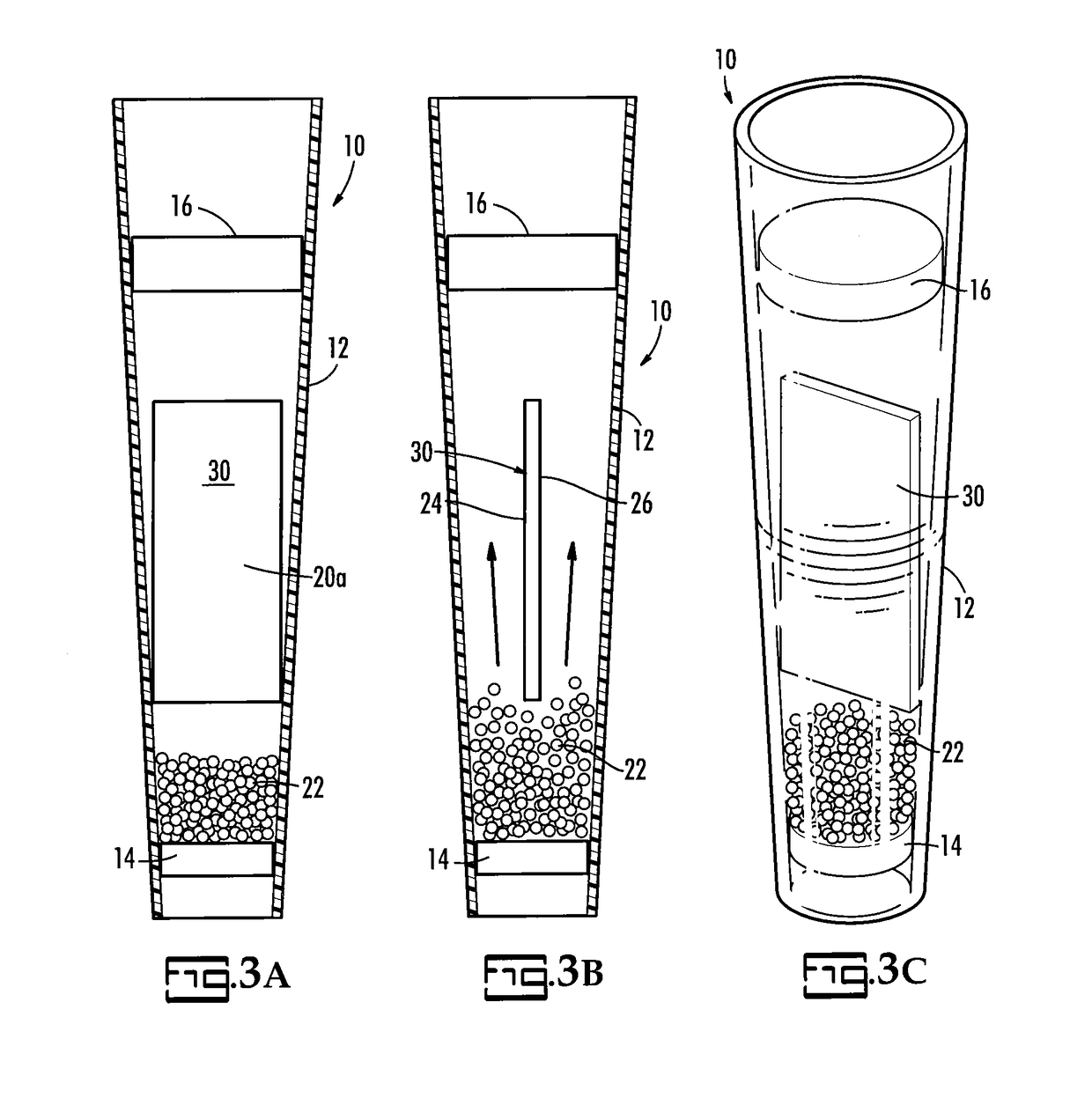Dispersive pipette extraction tip and methods for use
a technology of disposable pipette and extraction tip, which is applied in the field of extraction device, can solve the problems of irreproducible disposable pipette extraction method, inefficient sorbent efficiency, and inability to achieve the effect of facilitating turbulent mixing
- Summary
- Abstract
- Description
- Claims
- Application Information
AI Technical Summary
Benefits of technology
Problems solved by technology
Method used
Image
Examples
example 1
[0066]A drug mixture of opiates is extracted from urine using the dispersive SPE pipette tip device 10. The first series of extractions (a) use pipette tips without a baffle system, and the second series (b) of extractions use pipette tips with a baffle system. The final extracts were analyzed by liquid chromatography with tandem mass spectrometry (LC / MS / MS). The results of 8 replicates of the pipette tips without baffle systems show relative peak intensities with 15.6% relative standard deviation (RSD). However, with the baffle system in place, the % RSD is less than 5%. In fact, the % RSD of the peak intensities with the baffle system are relatively identical to the % RSD of the peak intensities of a neat (unextracted) standard of opiates injected repeatedly into the LC / MS instrument.
example 2
[0067]As shown in FIG. 12, a MALDI-TOF MS of trypsin digested bovine serum albumin (BSA) (1 μg) after reverse phase extraction with two different micropipette tips. The results for (a.) were taken after a dispersive pipette tip device 10 of the present invention was aspirated two times with a liquid sample. The results for (b.) were taken after a fixed resin reverse phase pipette tip was aspirated ten times with a liquid sample. Comparing (a.) including the use of pipette tip device 10 of the present invention (dispersive technology) to (b.) including the use of fixed resin reverse phase pipette tips, the results show higher signal intensities with greater sequence coverage for samples recovered using dispersive pipette tips 10. The relative intensity for (a.) has been normalized to (b.) for comparison purpose.
example 3
[0068]As shown in FIG. 13, tandem mass spectrometry of a peptide (m / z 1568) obtained on MALDI-TOF / TOF. The results for (a.) were taken after a dispersive pipette tip device 10 of the present invention was aspirated two times with a liquid sample. The results for (b.) were taken after a fixed resin reverse phase pipette tip was aspirated ten times with a liquid sample. Comparing (a.) dispersive technology to (b.) fixed resin reverse phase pipette tips, the peptide fragmentation signals have higher signal to noise ratios with full coverage of all y and b ions for (a.). The two spectra are not to scale with respect to each plot.
PUM
| Property | Measurement | Unit |
|---|---|---|
| volume | aaaaa | aaaaa |
| shape | aaaaa | aaaaa |
| cylindrical shape | aaaaa | aaaaa |
Abstract
Description
Claims
Application Information
 Login to View More
Login to View More - R&D
- Intellectual Property
- Life Sciences
- Materials
- Tech Scout
- Unparalleled Data Quality
- Higher Quality Content
- 60% Fewer Hallucinations
Browse by: Latest US Patents, China's latest patents, Technical Efficacy Thesaurus, Application Domain, Technology Topic, Popular Technical Reports.
© 2025 PatSnap. All rights reserved.Legal|Privacy policy|Modern Slavery Act Transparency Statement|Sitemap|About US| Contact US: help@patsnap.com



